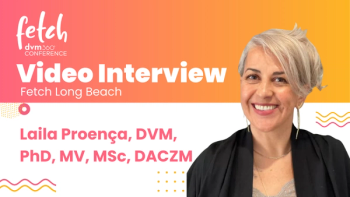
Behind the crash cart: A nationwide look through the eyes of traveling ER veterinarians
Discover the challenges and insights of traveling emergency veterinarians, as they navigate the evolving landscape of emergency veterinary medicine.
If you really want to understand the pulse of emergency veterinary medicine today, talk to a traveling emergency room doctor. These veterinary heroes don’t just work in one hospital; they move from city to city, stepping into some of the busiest emergency rooms across the country. Traveling emergency veterinarians at Thrive Pet Healthcare support hospitals during periods of high demand and low staff. Their experience working with a variety of teams, hospitals, and caseloads gives them a uniquely wide-angle view of the profession.
As the leader of Thrive’s national “TravelER” program, I have the privilege of working closely with these veterinarians. I recently asked several of them to reflect on what it’s like to practice emergency medicine today, what challenges they face, how they manage the emotional intensity of the work, and where they think the field is heading. Their insights are honest, inspiring, and full of perspective that every ER team, whether you're in a standalone specialty center or a general practice with urgent care hours, can learn from.
What would you say are the most pressing challenges you face on a day-to-day basis in emergency veterinary medicine?
McClure: Emergency veterinarians face a growing number of complex challenges that strain both their professional and personal capacities. Chief among these is a persistent staffing shortage, particularly a lack of qualified emergency veterinarians, which leads to long shifts, burnout, and limited access to emergency care for patients. Financial constraints compound the problem, as many clients are unable to afford emergency services, placing veterinarians in the difficult position of balancing patient care with financial reality. This is further complicated by the ever-increasing costs of veterinary medicine, driven by advancements in technology, rising pharmaceutical prices, and general inflation. Perhaps most emotionally taxing is the responsibility of caring for terminally ill emotional support animals, where the bond between patients and clients adds a layer of ethical and emotional complexity to end-of-life decisions. Together, these factors create a high-stress environment that demands resilience, empathy, and strong moral judgment from emergency veterinarians.
Coronado: No surprise here—staffing shortages, emotional strain, financial barriers, and the need to collaborate effectively in fast-paced environments are clearly front and center for these ER vets. To move the needle, we need more trained hands on deck, stronger support systems, and thoughtful ways to help clients and teams navigate the emotional and financial weight of emergency care.
Emergency cases often come with high emotional stakes. How do you manage stress and urgency while making critical medical decisions?
Cox: Listen, listen, and listen. Make sure the patient is cared for and not suffering, and that the clients are being heard. Everything else will fall into place.
Abraham: Calm is my superpower—that, coupled with an ability to multitask. People are never happy to enter the ER. They often come with fear, financial concerns, and, sometimes, the aftermath of previous bad experiences. It is important to meet them where they are, listen with an open heart, and work with them to create the best possible outcome for their pet and themselves. It can be helpful to take a step back, take a big breath and look at the whole picture.
Kelsey: The biggest part is accepting that you can only do so much and not feeling like a failure if you’re not able to see every stable patient that comes through the door. Fortunately, I work at a hospital with very experienced, well-trained staff that I can trust to provide the best possible care without having to babysit them. This allows me to focus on the medical aspect of the job. Again, it’s not the medicine that makes emergency practice difficult; it’s all the extraneous problems that arise or having to work with very limited staffing.
Coronado: What I appreciate most about these answers is how they remind us that staying grounded through calm communication, empathy, and trust in your team makes all the difference. There’s no one-size-fits-all approach. Even in the toughest moments, taking a deep breath, listening closely and letting go of perfection are strategies to help us keep patients and clients at the center.
Many emergency veterinarians mention burnout and compassion fatigue. How have you experienced these issues personally, and what strategies do you use to cope?
Abraham: I would be shocked to find an emergency veterinarian without some degree of burnout and compassion fatigue. These issues plague our profession and are the primary reason many of our colleagues leave veterinary medicine. Having interests outside of work can be extremely beneficial. For instance, I’m an avid traveler. I’m also a knitter, a voracious reader, a writer and a lifelong learner. Currently, I’m trying to learn French (with dreams of one day retiring in the South of France). I’m also a dedicated coffee enthusiast. Part of my identity is being an ER veterinarian, but my life is much more than that. Other strategies include getting outside and moving your body, eating well and taking time to rest, which is easier said than done.
Coronado: There’s no magic fix, but these stories show how important it is to nurture our identities beyond veterinary medicine. Whether it’s travel, hobbies, learning something new, or simply resting, having a life outside of work helps us bring our best selves back to the ER. For me, investing in emotional intelligence training has been transformational. The better I understand my own emotions, the more I can show up for others. Ultimately, tackling burnout and compassion fatigue requires a mix of setting boundaries, prioritizing self-care, seeking support, and building healthy habits to maintain empathy and resilience in the field.
How do the financial limitations of owners impact your ability to provide care, and how do you navigate those difficult conversations?
McClure: Financial limitations of pet owners can significantly impact the level and scope of care we’re able to provide. Still, our responsibility is to approach these situations with empathy, transparency, and flexibility. I always begin by presenting a clear standard plan of care and a detailed estimate, so families understand the ideal path for their pet’s health. From there, I’m prepared to offer alternative plans B through G, if necessary, without any prejudice or judgment. It’s essential to remember that pet families can sense when they’re being judged, and that can erode trust and discourage them from seeking help in the future. By focusing on open communication, realistic options, and respect for each client’s circumstances, we can still support the human-animal bond and deliver compassionate care, even when finances are tight.
Coronado: We all face the reality that finances shape care decisions. What matters is how we show up in those moments, with honesty, empathy and willingness to meet clients where they are. Our job is to guide, not judge. When we do that well, we preserve trust and help families feel supported, no matter the path they choose for their pet.
The veterinary field is evolving quickly- what changes have you seen in emergency care over the past few years, and where do you see the field heading?
Cox: Emergency medicine is a strong field that will always do well, at least in certain areas. One of the evolutions is the abundance of ERs and now urgent care in certain areas, so I think clinics will have to work harder to be more competitive. Being quick, accurate, and most importantly, being kind will go a long way. An area of concern is the lack of ER clinicians being surgically confident. Fewer surgeons are willing to be on call, and fewer ER clinicians are excited about cutting patients. As the market gets more competitive, this gap will be more evident. Another change I see impacting the ER is insurance. I’m seeing more clients with insurance for their pets.
McClure: The veterinary emergency field has evolved rapidly in recent years, and I’ve seen significant shifts both in how we deliver care and how we support the people providing it. One major change has been the growing emphasis on work-life balance, something my travel ER position has uniquely supported compared to more traditional roles. I’ve also seen the early adoption of AI tools in record-keeping, which helps streamline documentation and free up more time for patient care. Another exciting development is the rise of ER-specific training programs and academies, which are helping to elevate ER medicine by increasing skill levels and confidence among newer vets. Looking ahead, I’d love to see the establishment of a formal ABVP specialty in Emergency Medicine, especially one that can be pursued while working clinically, as it would provide structure and recognition for the advanced skills ER vets use every day.
Coronado: Emergency medicine is clearly on the move, from better tools and training to broader insurance access and a growing focus on work-life balance. At the same time, we’re seeing new gaps emerge, like the need for stronger surgical skills in ER settings. As the field continues to evolve, I’m encouraged by how much energy and innovation are being directed toward creating sustainable, compassionate care for patients, pet families, and veterinary teams alike.
In conclusion
What stood out most from this conversation is just how complex and emotionally charged emergency medicine has become, and how deeply committed these doctors are to meeting those challenges with skill and heart. From managing burnout and navigating tough financial conversations to coping with a fast-paced field, their insights offer valuable reminders about the power of empathy, teamwork, and adaptability.
To every veterinarian reading this: Keep speaking up, supporting each other and sharing what works. Your voice and your well-being matter more than ever.
Tony Coronado, DVM, is a seasoned veterinarian with a passion for helping animals during critical moments. A graduate of the University of Illinois College of Veterinary Medicine, he began his career in general practice before transitioning to emergency medicine after 5 years. Driven by the desire to “always find a way to make it work,” Coronado has dedicated the last 25 years to building and managing specialty and emergency facilities. He currently serves as the Vice President of Emergency Medicine for Thrive Pet Healthcare. Coronado resides in the Austin, Texas area with his wife and 2 canine companions, Jesse and Maya.
Newsletter
From exam room tips to practice management insights, get trusted veterinary news delivered straight to your inbox—subscribe to dvm360.




